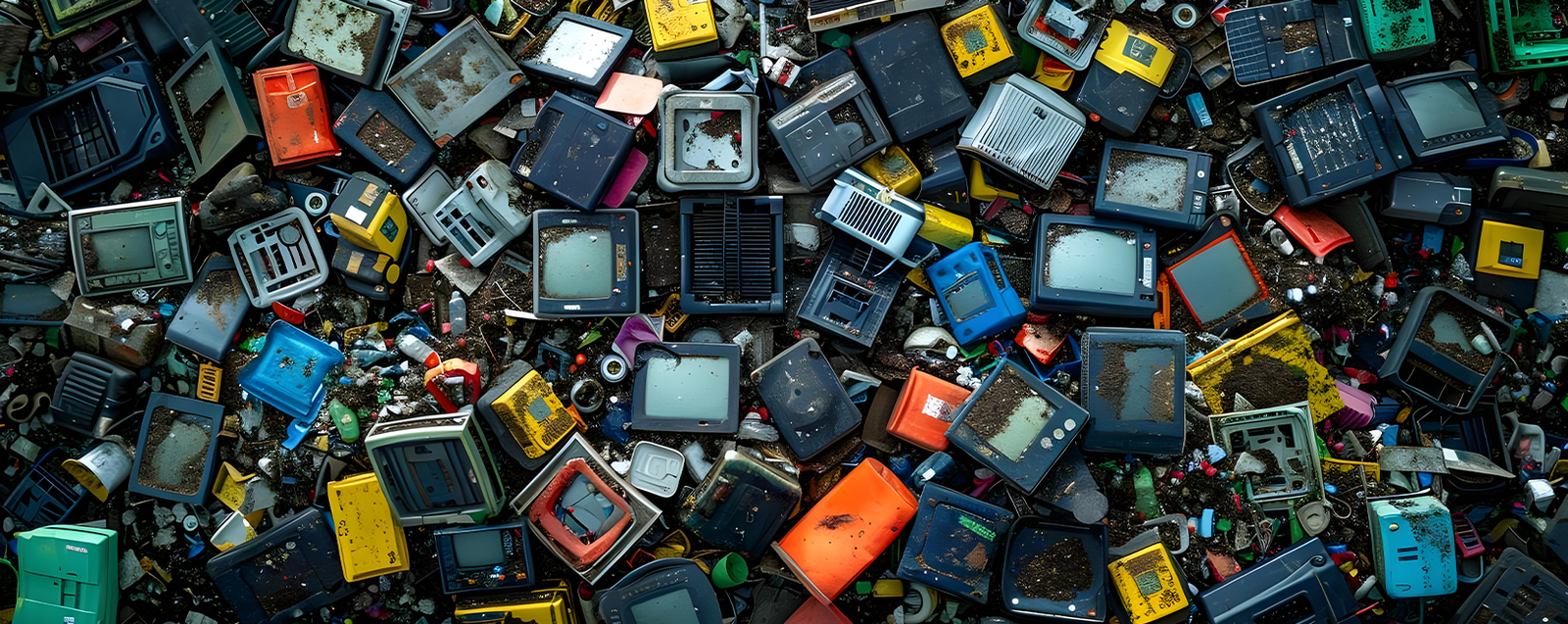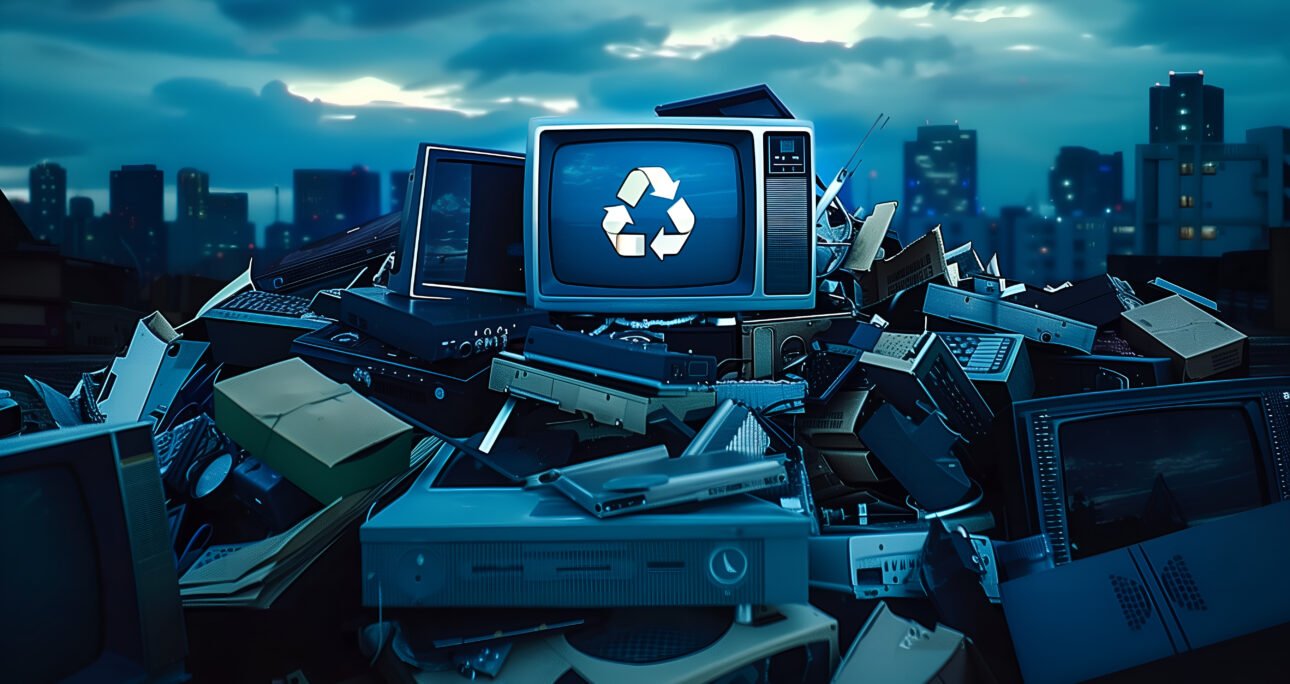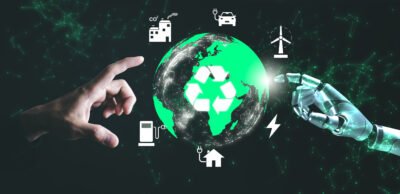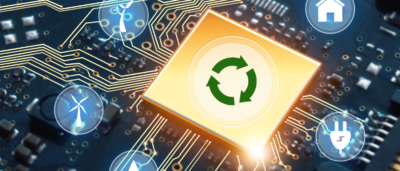As the world becomes increasingly reliant on technology, the rapid pace of innovation has led to a significant increase in electronic waste (e-waste). Managing this growing volume of discarded electronics has become a global challenge, with serious environmental and public health consequences if not addressed properly. To mitigate these risks, governments and environmental organizations have introduced Extended Producer Responsibility (EPR) regulations, compelling manufacturers to take responsibility for the end-of-life disposal of their products.
In this blog, we will explore what EPR is, how it works, and the role it plays in e-waste management. We will also examine how EPR shifts the responsibility for managing e-waste from consumers and governments to the manufacturers and producers of electronic goods.
What is Extended Producer Responsibility (EPR)?

Extended Producer Responsibility (EPR) is an environmental policy approach that makes manufacturers and producers responsible for the entire lifecycle of their products, particularly when it comes to end-of-life management. This includes the collection, recycling, and safe disposal of the product once it has been discarded by the consumer.
In essence, EPR shifts the burden of waste management from the government and consumers to the manufacturers themselves. It encourages producers to design products with sustainability in mind and ensures that they are accountable for reducing the environmental impact of their goods at the end of their usable life.
EPR regulations are particularly crucial for managing e-waste, given that electronic devices contain hazardous materials such as lead, mercury, and cadmium, which can cause significant harm to the environment if not properly disposed of.
How EPR Works in E-Waste Management
The implementation of EPR in e-waste management compels manufacturers to take an active role in ensuring that their electronic products are recycled or disposed of responsibly. EPR can take many forms, but in the context of e-waste management, it typically involves the following elements:
Product Take-Back Programs
Under EPR regulations, manufacturers are required to implement take-back programs where consumers can return their old, unused, or broken electronic devices to the manufacturer. These take-back programs ensure that the products are either recycled or disposed of in an environmentally safe manner. For example, a smartphone manufacturer might set up a system where customers can return their old phones to the company’s stores or designated collection points. The company is then responsible for recycling or properly disposing of the device.
Recycling and Recovery Targets
EPR policies often include specific recycling and recovery targets that manufacturers must meet. These targets specify the percentage of materials that need to be recovered and reused from discarded products. For instance, a company may be required to recover a certain amount of precious metals, plastics, or rare earth elements from old electronic devices and ensure that these materials are reused in the production of new products. This aspect of EPR not only reduces the amount of waste sent to landfills but also helps to conserve valuable resources by promoting.
Design for Environment (DfE)
EPR encourages manufacturers to adopt Design for Environment (DfE) principles, which focus on reducing the environmental impact of a product throughout its lifecycle. By designing products that are easier to recycle, less toxic, and more durable, manufacturers can minimize the environmental footprint of their products. For example, electronics companies can design products with fewer hazardous materials or create modular devices that are easier to disassemble and recycle. DfE not only supports sustainability but also helps manufacturers meet their EPR obligations more efficiently.
Financial Responsibility
Under EPR regulations, manufacturers may be required to finance the collection, recycling, and disposal of their products. This can involve paying fees to e-waste management companies or directly funding government-approved recycling programs. By taking on financial responsibility, manufacturers are incentivized to create more sustainable products that are less costly to recycle or dispose of at the end of their lifecycle. In some cases, producers may establish their own e-waste recycling infrastructure or collaborate with third-party recyclers to meet their obligations.
The Environmental Impact of EPR in E-Waste Management
The introduction of Extended Producer Responsibility has had a profound impact on e-waste management worldwide. By holding manufacturers accountable for the disposal and recycling of their products, EPR helps to reduce the environmental harm caused by electronic waste. Below are some of the key environmental benefits of EPR:
1. Reduction in Hazardous Waste

One of the primary benefits of EPR is the reduction in hazardous waste that enters landfills and the environment. Electronics contain toxic substances such as lead, mercury, and cadmium, which can leach into the soil and water when e-waste is improperly discarded. By ensuring that manufacturers take responsibility for recycling these products, EPR helps prevent the release of harmful toxins into the environment.
For example, under EPR, a manufacturer might be required to recover mercury from discarded fluorescent lamps and safely recycle or dispose of it, preventing the contamination of nearby ecosystems.
2. Conservation of Natural Resources
EPR plays a critical role in promoting the recovery of valuable materials from discarded electronics, reducing the need for raw material extraction. Many electronic devices contain precious metals like gold, silver, and platinum, as well as rare earth elements, which are essential for producing new electronics.
By recovering these materials through recycling, manufacturers can reduce the demand for mining and other resource extraction activities that are often energy-intensive and environmentally destructive. EPR also encourages manufacturers to find ways to reuse components in new products, contributing to a circular economy that minimizes waste.
3. Energy Savings and Reduced Carbon Footprint

Recycling e-waste under EPR regulations can significantly reduce the energy consumption associated with producing new electronic devices from raw materials. For example, recycling aluminum requires 95% less energy than producing it from bauxite ore. Similarly, recovering copper and other metals from e-waste uses far less energy than mining and refining these materials.
By promoting the recovery and reuse of materials, EPR helps to lower the carbon footprint of electronic manufacturing and contributes to the fight against climate change.
4. Encouraging Eco-Friendly Product Design
EPR policies incentivize manufacturers to design products that are easier to repair, recycle, and disassemble. This focus on eco-friendly product design leads to innovations that make electronics more sustainable and less harmful to the environment.
For example, manufacturers may develop modular devices where individual components can be easily replaced or upgraded, rather than requiring the purchase of an entirely new product. This reduces the amount of e-waste generated and extends the lifespan of electronic devices.
How EPR Benefits Businesses and Consumers
While EPR regulations primarily target manufacturers, they also provide benefits for businesses and consumers:

Reduced E-Waste Disposal Costs for Businesses
For businesses that generate large amounts of e-waste, such as IT companies, retailers, and telecom providers, EPR policies can reduce the cost of e-waste disposal. Instead of having to manage e-waste on their own, businesses can participate in manufacturer take-back programs, where the cost of recycling or disposing of electronic waste is covered by the producer. This not only reduces disposal costs for businesses but also helps them comply with environmental regulations related to e-waste management.

Convenient Recycling for Consumers
EPR programs make it easier for consumers to responsibly dispose of their old electronic devices. Instead of having to search for a recycling facility, consumers can take advantage of manufacturer take-back programs that allow them to return their old products to retailers or collection centers. This convenience encourages more people to recycle, helping to reduce the amount of e-waste that ends up in landfills.
EPR: A Global Effort
Extended Producer Responsibility is not limited to one country or region. Many governments around the world have implemented EPR regulations to tackle the growing e-waste crisis.
Some key examples include:
- European Union (EU): The WEEE Directive in the EU requires manufacturers to take back and recycle a wide range of electronic products, with strict targets for material recovery.
- United States: Several states, including California and New York, have introduced EPR laws that require manufacturers to finance the collection and recycling of e-waste.
- India: India’s E-Waste (Management) Rules mandate that producers are responsible for collecting e-waste generated from the end-of-life of their products and channeling it to authorized recycling centers.
These regulations are helping to create a more sustainable approach to e-waste management by ensuring that manufacturers take responsibility for the entire lifecycle of their products.
Conclusion
Extended Producer Responsibility (EPR) is a crucial tool in the fight against e-waste pollution. By compelling manufacturers to take responsibility for the recycling and disposal of their products, EPR helps reduce the environmental impact of electronic waste, conserve natural resources, and promote sustainable product design.





Extended Producer Responsibility
As the world becomes increasingly reliant on technology, the rapid pace of innovation has led to a significant increase in electronic waste (e-waste).